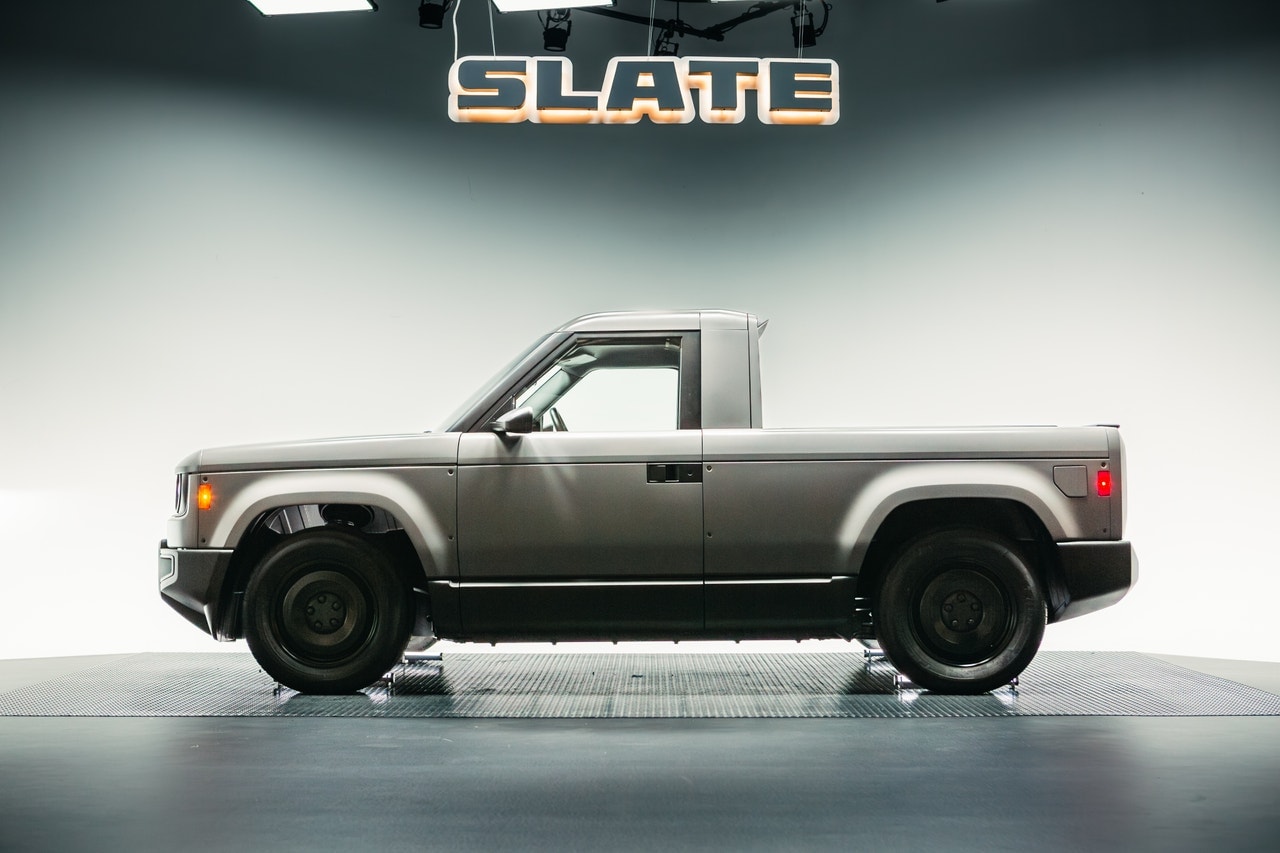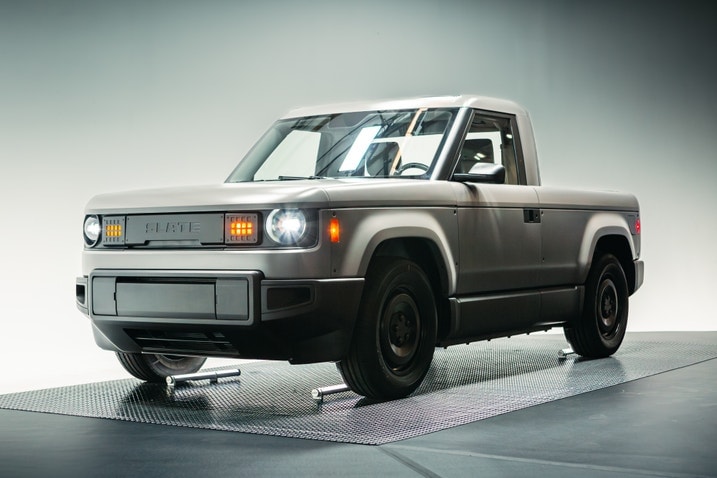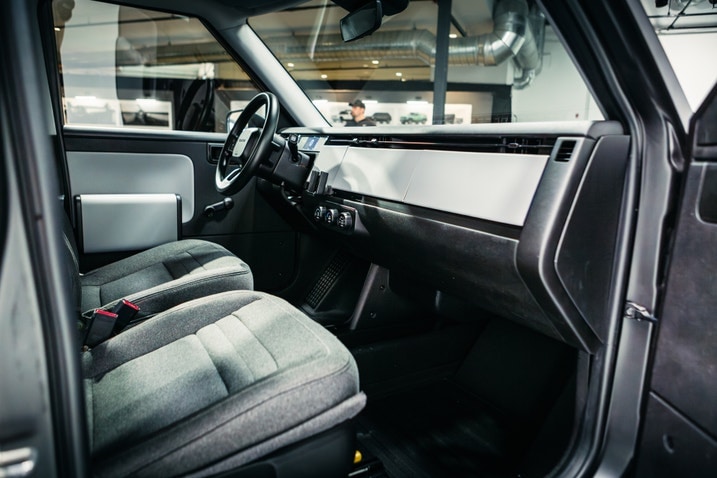- Slate is a new EV startup that plans on launching its first vehicle late next year.
- The still unnamed truck has a projected price of less than $20,000 when you factor in government incentives.
- It will travel 150 miles on a charge and comes with a massive catalog of options for the buyer to customize it to their liking.
The Slate Auto $20,000 Electric Truck Has Huge Potential but Many Unknowns
Are Americans willing to give up creature comforts for a cheap new car? Slate thinks so.
Slate Auto and its new electric mini pickup truck are trying to pull off a unique outside-of-the-box idea. It’s about to enter the market with a pickup truck that you can buy for less than $20,000 when you factor in government incentives. But that’s just the start.
Slate thinks that new cars are just too expensive, and its solution to the problem is to offer something that isn’t. The cost is substantially lower than you’ll pay for just about anything else on sale today. However, it comes with a serious reduction in the features that car shoppers are used to these days.
Let’s talk about this truck
I’ve seen it with my own eyes. The first product from Slate Auto is a truck that will likely have a model name at some point, though nothing concrete yet. It’s tiny by modern American standards, about 20% smaller than a Ford Maverick.
When you open the truck’s door, you won’t find a typical modern car interior. Nope, this is back to basics, baby! No center touchscreen, no audio system and no power windows. It’s the kind of cabin that hasn’t been revealed in a new vehicle for the last 30 years. But it was all done deliberately to keep the price as low as possible.
The highlight features inside include a teeny driver’s display that shows how fast you’re going, how much range you have, and that’s about it. It also has air conditioning and cruise control. Passenger space is actually decent considering how small the cab is, with enough room for two people to travel comfortably.
The truck I saw in person was a very early prototype and it was rough. It smelled like spray paint; interior panels had tape on them, and the doors needed special assistance to shut. To be fair, I see concept cars with similar build quality all the time from name-brand manufacturers. But I’ll have to wait until I see a closer-to-production version of the Slate truck before I’m convinced its fit and finish will be up to snuff.
The gray truck you see in this photo is exactly how each and every one built will roll off the factory floor. The company refers to this as “the blank slate,” providing customers a bare-bones truck that they can do just about anything to. Wrap it purple? Sure. Add in a holder for your tablet and some speakers? No problem. There’s even a kit available to convert the truck into a two-row SUV (pictured below). Slate says that there will be over 100 options available in the configurator when the truck launches, with many more to follow down the line.
Slate mini truck range and power
Standard is a 52.7-kilowatt-hour battery pack that powers a single electric motor on the rear axle. The company is targeting a range of 150 miles and says the truck is good for 201 horsepower. One Slate employee provided a 0-60 mph time of roughly 8 seconds but said that could be subject to change once they’re further into testing and validation.
But like everything else with Slate, even the range is configurable for the consumer. There’s an optional 84.3-kWh pack that targets a more impressive 230 miles of range. That figure is lacking compared to the absolute majority of EVs on sale today, and that's one of Slate’s biggest hills to climb. Most consumers would sneeze at these range estimates, but then again, they also haven’t been met with a new EV that costs so little.
I asked how much some of these upgrades cost — the bigger battery, the SUV conversion, the paint wraps, and so on — and I received the same blanket response that the company isn’t ready to talk specifics on price just yet. That said, I was told that “you need to try really hard to double the truck’s $20,000 price tag.” It’s more likely to see trucks in the mid-to-high $20,000s, depending on how crazy you go with options.
Because all of the trucks will be built as “blank slates” when they leave the production facility, installing the options looks a little different than usual. You the customer can have your accessories delivered to your home for a DIY installation to save a little money, or you can pay to have your truck shipped to a facility prior to delivery where a professional will install everything for you.
Haven’t we see this story before?
Anyone who’s paid attention to the EV market over the last few years knows that there have been several startup companies (just like Slate) that overpromised and underdelivered. Fisker imploded; Lordstown came and went in a flash. And then there are ones we’re still unsure about like Afeela and Scout.
So I spoke to several Slate employees and came at them with a healthy degree of skepticism while they explained the plan. The company plans to build its products in the United States and will source the majority of its parts (including the battery) domestically as well. That means, in theory at least, it will be largely insulated from the threat of tariffs.
Where will the trucks be built? Slate says that it has identified a factory in the Midwest to purchase and will look to close a deal on it soon. And if that goes well, Slate plans on starting customer deliveries late next year. To be frank, a lot of things have to go right for that to happen, but the consensus among employees is that these lofty goals are very much possible.
At this moment, Slate has several hundred employees based mostly out of Detroit, though many are scattered elsewhere too. The rest of this year will include big milestones like getting crash test ratings and validating the truck on public roads now that it’s no longer a big secret.
To say that Slate has an uphill battle to meet its production targets is a massive understatement. Introducing a new EV in a market that currently favors hybrids is risky, and if the government does away with the tax incentives, then the truck’s price will be much closer to $30,000. There’s a lot of work to be done, but the folks I met all seemed able and motivated to do it. Now we’ll have to watch and see if Slate finds the success it's hoping for.










 by
by  edited by
edited by